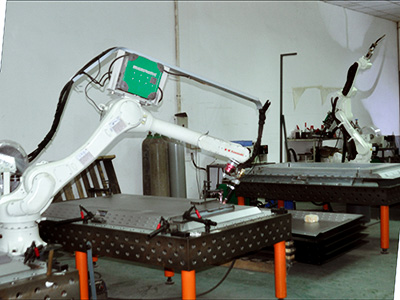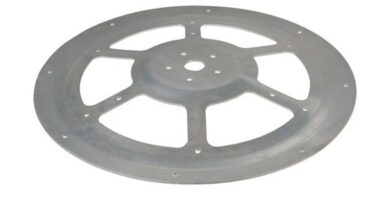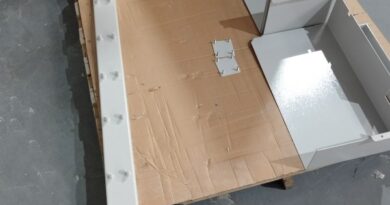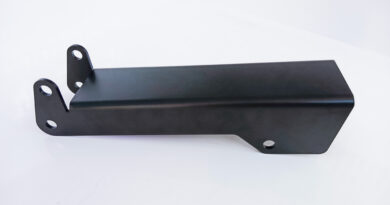Arc welding technology
Arc welding technology is divided into six welding methods: manual arc welding, submerged arc welding, gas tungsten arc welding, gas metal arc welding, plasma arc welding and tubular wire arc welding. The following is the introduction of these six different welding methods:
1.Manual arc welding
Manual arc welding is one of the earliest and still widely used welding methods among various arc welding methods. It uses the coated electrode as the electrode and filler metal, and the arc burns between the end of the electrode and the surface of the workpiece to be welded.
Under the action of arc heat, on the one hand, the coating can produce gas to protect the arc, on the other hand, it can produce slag to cover the surface of the molten pool to prevent the interaction between the molten metal and the surrounding gas. The more important role of slag is to produce physical and chemical reaction with molten metal or add alloying elements to improve the energy of weld metal.
Manual arc welding equipment is simple, light and flexible. It can be applied to the welding of short joints in maintenance and assembly, especially for the welding of parts that are difficult to reach. Manual arc welding with corresponding electrodes can be applied to most industrial carbon steel, stainless steel, cast iron, copper, aluminum, nickel and their alloys.
2.Submerged arc welding
Submerged arc welding is a melting electrode welding method with granular flux as the protective medium and the arc hidden under the flux layer. The welding process of submerged arc welding consists of three links:
Sufficient granular flux shall be evenly deposited at the joint to be welded of the weldment → the conductive nozzle and weldment shall be connected with the welding power supply for two stages respectively to generate the welding arc → the welding wire shall be automatically fed and the arc shall be moved for welding.
Submerged arc welding has the characteristics of unique arc performance, high electric field intensity of arc column and high production efficiency; The flux participates in the metallurgical reaction, Si and Mn are reduced, and part C is burned, limiting the removal of impurities s and P to h and preventing the generation of hydrogen pores.
Due to the large penetration, high productivity and high degree of mechanical operation, submerged arc welding is suitable for welding long welds of medium and thick plate structure. It is widely used in shipbuilding, boilers and pressure vessels, bridges, overweight machinery, nuclear power plant structure, marine structure, weapons and other manufacturing departments. It is one of the most commonly used welding methods in today’s welding production.
In addition to the connection of components in metal structure, submerged arc welding can also weld wear-resistant or corrosion-resistant alloy layer on the surface of base metal. With the development of welding metallurgy technology and welding material production technology, the materials that can be welded by submerged arc welding have developed from carbon structural steel to low-alloy structural steel, stainless steel, heat-resistant steel and some non-ferrous metals, such as nickel base alloy, titanium alloy, copper alloy and so on.
3.Gas tungsten arc welding
This is a non-melting electrode gas shielded arc welding, which uses the arc between tungsten electrode and workpiece to melt the metal and form weld. In the welding process, the tungsten electrode does not melt and only acts as an electrode. At the same time, argon or helium is sent into the nozzle of the welding torch for protection.
Additional metals can also be added as needed. It is commonly known as TIG welding in the world. Gas tungsten arc welding is an excellent method for connecting sheet metal and backing welding because it can well control heat input.
This method can be used to connect almost all metals, especially for welding metals such as aluminum and magnesium, which can form refractory oxides, and active metals such as titanium and zirconium. This welding method has high weld quality, but its welding speed is slower than other arc welding.
4.Gas metal arc welding
Gas metal arc welding is a fusion welding method using the arc as the heat source. The arc is established between the continuously fed welding wire and the molten pool. The molten pool formed by the mixing of the molten welding wire metal and the base metal crystallizes to form the weld after the arc heat source is removed, and the separated base metal is connected by metallurgy.
Oxidation of alloy elements during CO2 welding, under the action of arc high temperature, CO2 will decompose into CO, O2 and O. under welding conditions, CO is insoluble in metal and does not participate in the reaction, while CO2 and o have strong oxidation, which oxidizes Fe and other alloy elements.
Deoxidation and alloying of weld metal. Usually, a certain amount of deoxidizer is added into the welding wire for deoxidation. In addition, the remaining deoxidizer is left in the weld as alloy elements to make up for the loss of oxidation and burning loss and ensure the chemical composition requirements of the weld.
At present, CO2 gas shielded welding is widely used in locomotive manufacturing, ship manufacturing, automobile manufacturing, coal mining machinery manufacturing and other fields. It is suitable for welding low carbon steel, low alloy steel and low alloy high strength steel, but it is not suitable for welding non-ferrous metals and stainless steel. Although some data show that CO2 gas shielded welding can be used for stainless steel welding, it is not the first choice for stainless steel welding.
5.Plasma arc welding
The water-cooled nozzle and other measures can reduce the cross-sectional area of the arc column area of the arc, and significantly improve the temperature, energy density and plasma flow rate of the arc. This kind of arc that compresses the arc column with external constraints is called plasma arc.
Plasma arc is a special form of arc. It is an arc with high energy density. It is still a gas conduction phenomenon. Plasma arc welding is a method that uses the heat of plasma arc to heat and melt the workpiece and base metal.
Plasma arc welding is widely used in industrial production, especially in the welding of copper and copper alloy, titanium and titanium alloy, alloy steel, stainless steel, molybdenum and other metals used in military and cutting-edge industrial technologies such as aerospace, such as missile shell of titanium alloy, some thin-walled containers on aircraft, etc.
6.Tubular wire arc welding
Tubular welding wire arc welding also uses the arc burning between the continuously fed welding wire and the workpiece as the heat source for welding, which can be considered as a type of GMAW. The welding wire used is tubular welding wire, which is filled with flux of various components.
When welding, add shielding gas, mainly CO2. The flux decomposes or melts when heated, which plays a role in slagging, protecting the solution pool, alloying and stabilizing the arc. In addition to the advantages of the above-mentioned GMAW, tubular wire arc welding has more advantages in metallurgy due to the action of flux in the pipe.
Tubular wire arc welding can be applied to the welding of most ferrous metal joints. Tubular wire arc welding has been widely used in some industrial advanced countries. “Tubular welding wire” is now called “flux cored welding wire”.




